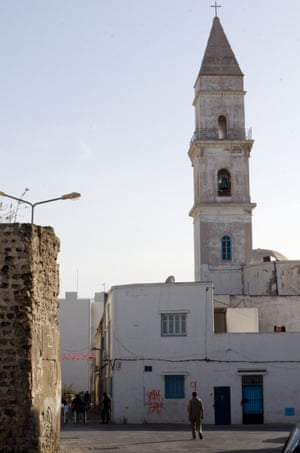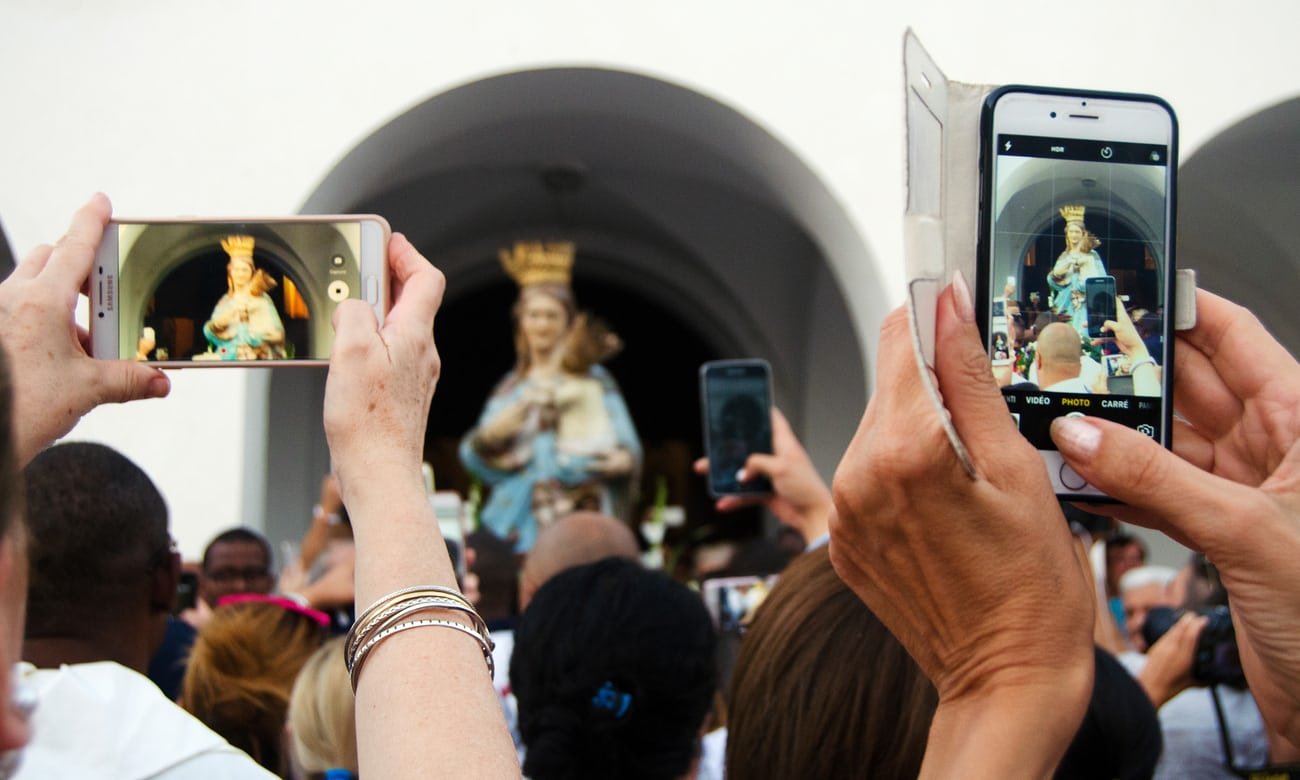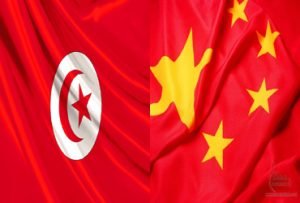About 150 people are crowded into the 19th-century church of Saint Augustin and Saint Fidèle in the Tunis suburb of La Goulette. More are gathered outside in the summer heat, behind the iron railings lining the narrow streets of Little Sicily, the neighbourhood where the fishing town’s Italian migrants once settled and established themselves.
The crowds have come to see the first procession of the Assumption to be staged in the city since the tradition died out in the early 60s. In its heyday, the flower-decked statue of the Virgin of Trapani would be carried through the packed streets of La Goulette to the harbour where, alongside the area’s Muslim and Jewish population, priests would bless the fishing boats and their crews.
In a region often defined by its sectarianism, Tunisia, despite its social tensions, remains a beacon of religious tolerance.
Tonight’s procession is a shortened affair. The statue is conveyed out of the church and around the square to a mix of hymns and traditional ululations. Yet the camera phone-wielding throngs crowding the square are testament to the enduring attraction and relevance of the ceremony.
Originally from Chad, Father Djerambete Narcisse, the parish priest, underlines the message of unity. “The procession of the Assumption is about the unity of La Goulette. This community of Christians, Muslims and Jews can all come together to celebrate 15 August. You can see it today – we are one community. People have travelled from everywhere.”
La Goulette’s Christian tradition established itself among the area’s Jewish and Muslim communities towards the end of the 19th century. As the years passed, and European rivalries intensified, a trickle became a surge. As Italian immigration exploded in Tunisia, La Goulette became a focal point for the tens of thousands of Sicilian and Sardinian migrants who settled at various points along the country’s Mediterranean coast.
The arrival of the fishermen brought Christian traditions to Muslim-majority Tunisia. “The procession started in the 19th century, with the statue of the Virgin of Trapani being carried down to the harbour where the boats would be blessed,” said Professor Habib Kazdaghli, a history lecturer at Manouba University in Tunis. “It got really popular from around 1915 onwards, with Muslims and Jews joining the procession.”
Since its pre-war heyday, however, the procession – like some of its religious minorities – has faded into history. While their architectural footprint remains, Tunisia’s Italian population all but disappeared after it embraced the philosophies of Benito Mussolini. The fishing district’s Jewish population, meanwhile, whose ancestry predated Tunisia’s conquest by the Arabs and Ottomans, have largely withdrawn to Israel or the security of Europe. From a population of about 100,000 after the second world war, the estimated number of Jews living in Tunisia is now just 1,700.
Every year, under the watchful eye of what can feel like the entire Tunisian army, the Jewish festival of Lag BaOmer takes place on the island of Djerba, with pilgrims attending from around the world.






Comments are closed.